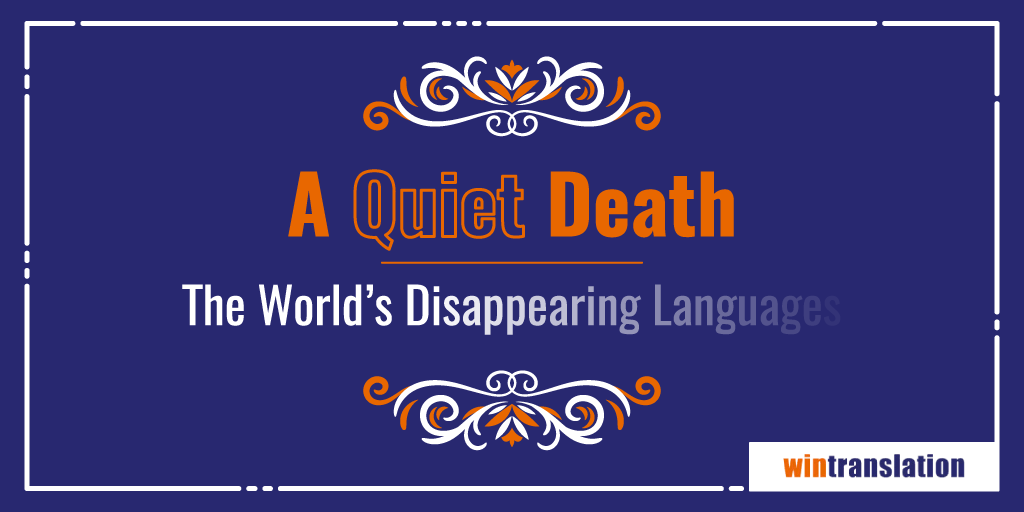A Quiet Death: The World’s Disappearing Languages
Endangered Languages
When we hear the word “endangered” most of us probably think of the plight of the white rhino or the polar bear, or maybe we think about the dwindling of the tropical rain forests. The word “endangered” likely does not lead us to think of languages. Therefore, it would come as a surprise to many to learn the startling rate at which languages are disappearing from our societies. Of the nearly 7,000 languages in the world today, over 3,000 (more than 40%) are endangered and many have already gone extinct!
The Future of Language
Many languages have been dropping out of use since ancient times, however, in modern day, they are disappearing at an unprecedented rate. According to The Endangered Languages Project , experts have predicted a “best-case” and “worst-case” scenario for the future of languages in the next century. The worst-case scenario is that 90% of all languages will cease to be spoken within 100 years. On the other hand, the best-case scenario is that 50% will survive in the next 100 years. Looking at these predictions, there is no denying that the disappearance of our languages is one of the most serious issues of our time.
While these numbers are shocking, they may not be surprising for those who are first-hand witnesses to their languages disappearing. Some of the languages currently in the highest danger of extinction are: the Indigenous languages in Canada and the U.S, Indigenous languages in Australia, and the minority languages of Russia amongst other. Here is a real example of language decline from our history: At the time of the Gold Rush, in the year 1848 in California, there were about 100 Indigenous languages being spoken. Today, only 50 of these languages have survived. This is a shocking statistic to comprehend, and undeniably worrisome for the future.
Loss of Linguistic Diversity
An individual language disappearing is a tremendous loss, however the disappearance of entire families of languages is a loss of a colossal level.
“…the disappearance of whole families of languages is a tragedy comparable in magnitude to the loss of whole branches of the animal kingdom (classes, orders, families), such as the loss of all felines or all cetaceans. Just as it would be difficult to understand the animal kingdom with major branches missing, it is impossible to understand the history and classification of human languages with the loss of entire language families.” (The Endangered Languages Project).
Unfortunately, this is exactly what is happening today, with more than 100 of the 420 independent language families of the world no longer being spoken, equating to a loss of 25% of the linguistic diversity of the world!
Can The Decline Be Reversed?
Without a real push for revitalization of languages, this trend will continue and the worst-case prediction will become reality. Language revitalization is an attempt to halt or reverse the decline of a language or to revive an extinct one. The good news is that several revitalization projects and organizations have started up in recent years.
Related Links:


This Post Has 0 Comments